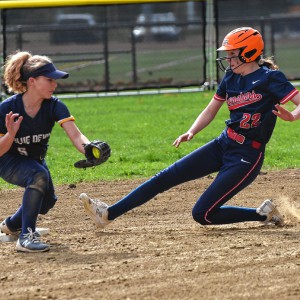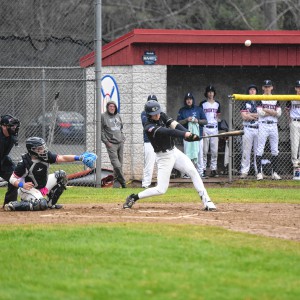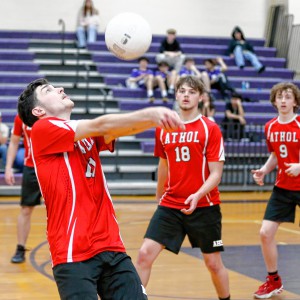On the Ridge: Post rut scents and calls
| Published: 11-11-2020 7:48 PM |
I appreciated the calls from confused hunters regarding my column last week, which was the first in a two-part series about deer hunting and “the rut.” It is amazing how leaving out just a word or two can confuse people, which apparently, I did.
Here’s what I was trying to say in a confusing second paragraph.
“Each fall, breeding occurs around the same time and nothing, not temperatures, rain, snow, moon phase, or anything else changes it much. The timing of the rut is simply related to the period of daylight. As the season progresses and the amount of daylight decreases hormones, in both bucks and does, an urge to breed elevates. This timing ensures that fawns will be born at the proper time in the spring, which will increase their chances of survival.”
Hope this clears it up, please accept my apologies for confusing you, and thanks for reading the Recorder. Now, let’s get into post-rut, scents and calls with a simple scenario.
We’re not there yet, but post-rut will be here soon, and let’s say, you still have a tag to fill. Does are starting to show up in groups again, and those wild days of “peak-rut” are winding down. As a deer hunter, you cannot let slow hunting periods like this bring you down. But this is an important time to consider what you’re doing, because to be successful hunting post-rut whitetails, especially if they’ve gone nocturnal, you must hunt them smartly.
When I was a young hunter, I would hunt the same way the entire deer season. This usually meant doing whatever dad told me to do. But as I got older, I started to think a little for myself. Late in the season I would hunt scrape areas that I’d found earlier. The only thing wrong with that was, once we got deeper into post-rut, fresh scraping activity dwindles down to almost nothing. I was hunting over old scrapes, and hoping for a miracle.
As the season progressed, deer sightings decreased significantly. Then, one day a lightning bolt went off in my head that said, “If I were a buck, where would I be hiding when the tail end of the season arrived?” And from then on, once I started trying to think like a buck, sightings and opportunities began to increase. Not surprisingly, I began to look intently at the thickest cover I could find near known feeding areas – hunting in and around these “magnet spots” is a great way to catch a whitetail off guard late in the season. This is an American Express tip, don’t leave here without it.
When the breeding season starts to tail off, deer change their priorities – especially bucks. After weeks of chasing does, by the time a whitetail buck makes it to this point, he’s a different buck from early November. And even though some does will be bred during this time, their behavior will also be much different.
Article continues after...
Yesterday's Most Read Articles
In the late season, survival mode kicks in as bucks and does need important nutrition and calories. The fall acorn mass is either long gone or starting to rot. High calorie feeds are critical now as deer are looking for anything that contains high nutrients. During this time, hunting food sources close to thick cover is really the bread and butter of post-rut hunting. By concentrating on food sources and bedding areas, you’ll likely be able to get close to doe groups. Moreover, where there are does, there are bucks still hanging around and searching.
Using antlers and deer calls is also associated with the rut, and there’s no question that November is the time to use them. Don’t put them away in December however, because they can be useful during post-rut. Over the years, there have been many close encounters with bucks during post-rut that have been carefully rattled and called to. I’ve also found that using calls sparingly tends to work much better, especially if you focus on calls that make bucks feel reassured like an occasional doe bleat or a soft, non-threatening buck grunt. And if a deer should respond, pay attention to the animal’s behavior, and let that dictate what your next move is going to be.
If using scent is your thing then keep it simple. Sometimes the scent of buck urine will get other bucks cranked up and possibly moving, but it’s a better bet to just keep it simple and stay with doe urine during this period. Bucks are tired of chasing and fighting by now, but that sweet scent may still entice them enough to take a look, which might be all you need to fill a tag.
All that said, post rut is a great time to fill a tag, however no amount of planning or special tactics will guarantee you a deer. You have to get out there and put your time in. During late season, hunt close to those food sources that deer are focused on. Stay close to those thick pockets of cover and don’t let the long season wear you down, because even though things are slowing down, this is still a great time of year to be a deer hunter.
Joe Judd is a lifelong hunter and sportsman. He is an outdoor writer, seminar speaker, and a 2019 inductee into the N.E. Turkey Hunting Hall of Fame. Joe is also on the Quaker Boy Game Calls and Bass Pro Shops/Cabela’s Pro-Staff.

 High schools: Mahar softball can’t stay with Northampton in 20-6 loss (PHOTOS)
High schools: Mahar softball can’t stay with Northampton in 20-6 loss (PHOTOS) Baseball: Sam Connors, Mahar get past Smith Academy for win No. 2 (PHOTOS)
Baseball: Sam Connors, Mahar get past Smith Academy for win No. 2 (PHOTOS) High schools: Big fifth inning powers Pioneer baseball past Greenfield
High schools: Big fifth inning powers Pioneer baseball past Greenfield  Boys volleyball: Athol can’t stay with Holyoke in 3-0 loss (PHOTOS)
Boys volleyball: Athol can’t stay with Holyoke in 3-0 loss (PHOTOS)
